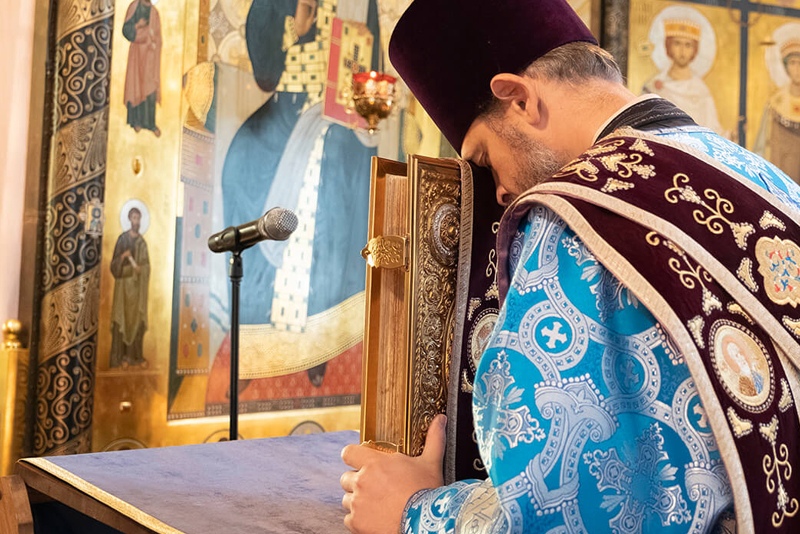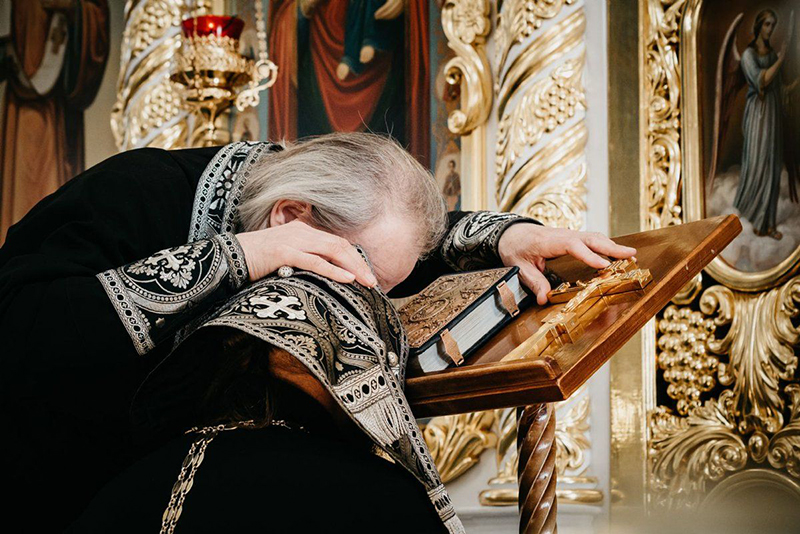
Before the Holy Gospel is read at the liturgy, we hear a lingering solemn chant. Alleluia is performed on different melodies (tones) and interspersed with sacred verses. What is the history of this chant? How were these liturgical elements different in the West and in the East? What is the significance of singing Alleluia before the Gospel reading?
The history of the Alleluia verses in the West
In the West, Alleluia preceding the Gospel has existed for as long as it has in the East. This is explained by the fact that Christian worship has developed in succession from the ancient synagogue worship of Israel, where Alleluia also played an important role. In the pre-reform worship of the Western Church, Alleluia was sung twice followed by one verse, and then repeated once more. The order of chanting was described in the Graduale Romanum that also provided sheet music of Alleluia chants for various holidays. According to this ancient Roman liturgical rite, “if alleluia, alleluia is spoken with a verse, then it begins with two chanters singing Alleluia up to the neume.” A neume is a solemn melody performed specifically on the last syllable of a word. It is also known as jubilus. Then the chorus “repeats alleluia and adds the neume, stretching out the “a”syllable. After that the two singers begin the verse and the chorus responds by continuing it. At the end of the verse, the same two singers repeat alleluia, and the chorus adds one neume. Such Alleluia melody of the Roman Church was distinguished by its liveliness and gravity. Because of these properties it was not used during Great Lent (including the preparatory weeks), on the weekdays in Advent and during other fasts and days of abstinence.
Apparently, Alleluia was introduced into Christian worship in the West by Pope Damasus (+ 384), and initially it was used only in Easter time. It did not come into use on other holidays until the time of St. Gregory the Great (+ 604). Later the practice occurred of replacing the neume with a relevant text added to Alleluia depending on the holiday. That text was unrhythmical at first (hence the name prosa). Soon metric verses appeared, called sequentia. That became an analogue of alleluarion (Greek ἀλληλουϊάριον), the eastern tradition connected with the Alleluia verses (Explanatory Typicon of Michael N. Skaballanovich). There were about 200 such alleluiaria in XII century France and Germany. They constituted full hymns of 8-10 stanzas and were included in local missals (service books). However, only five main types of sequences were included in the Roman Missal. Initially they were the sequences for Easter, Pentecost and for the commemoration of the dead. Later that list was widened by sequences for the Catholic holiday of Corpus Domini, and one more in memory of the seven sorrows of the Mother of God).
The history of the Alleluia verses in the East
In the East, as well as in the West, the Gospel reading is preceded by the singing of Alleluia. However, there are also exceptions. In the West, in the liturgy of the Mozarabian rite, Alleluia is sung not before, but after the Gospel reading. In the East, a similar exception exists in the Coptic liturgy, where psalm 50 is read before the Gospel instead of Alleluia. In the Abyssinian liturgy, Alleluia is repeated three times by the priest after three verses from the beginning of psalm 33. In the Nestorian tradition, Alleluia is pronounced three times by the deacon and the singers (Bp. Porphyry. Creed, worship … of the Copts).
The oldest of the Orthodox liturgical monuments mentioning Alleluia before the Gospel (notably, with an indication of the tone and verse) is the Georgian edition of a 7th century Jerusalem lectionary. (Archpriest K. Kekelidze, Jerusalem Lectionary of the VII Century). Liturgical Alleluia already existed in the ancient Orthodox liturgies: the Alexandrian liturgy of St. Mark, liturgy of St. Peter, the Jerusalem liturgy of St. Jacob in its 10th century edition. It also existed in the Byzantine liturgies, St John Chrysostom and St Basil the Great in a rather elaborate form. According to one of the most ancient sources, the deacon’s words “Wisdom” were followed by the priest’s “Peace to all.” Then the deacon pronounced “Wisdom, let us behold,” and said the Alleluia with the verses. (Goar. Εύχολόγιον, 87).
What is the significance of singing Alleluia immediately before reading the Gospel? Its meaning is to prepare the Christian community and every believer to listen to the Word. Just as the paremias or the Apostle readings are preceded by prokimeni comprised of separate verses from the psalms, the reading of the Gospel, the core of Holy Scripture, requires a separate prayerful preparation. As the Apocalypse states, the singing of Alleluia will be the song of eternity (see Apoc. 19: 1,3-5). Alleluia, along with the word Amen, is in fact the only Hebrew expression that Christians did not dare to translate into their languages, adopting its Old Testament sounding. It may seem to many that the singing of Alleluia is conclusive in relation to the Apostle, but this statement is erroneous. According to the statute, it is the Alleluia singing during which the censing of the church should be performed. That emphasizes the importance of the forthcoming Gospel reading even further.




